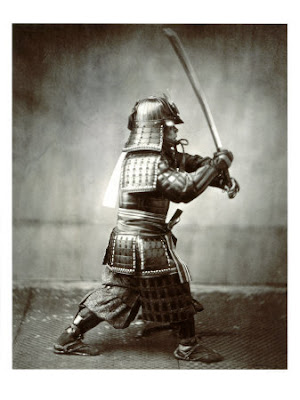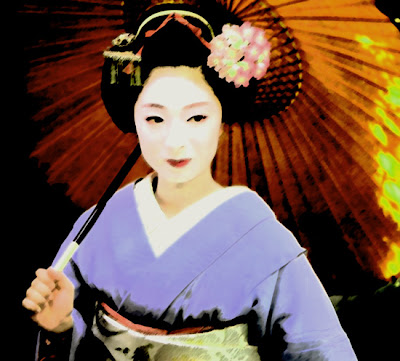 Using the most adequate tool kit is essential for writing correct japanese calligraphic works. The primary tools are paper, special brushes, ink and the ink-pot; these four are also known under the expression "The four treasures of the Study". Here are a few basic tools and their description:
Using the most adequate tool kit is essential for writing correct japanese calligraphic works. The primary tools are paper, special brushes, ink and the ink-pot; these four are also known under the expression "The four treasures of the Study". Here are a few basic tools and their description:* Shitajiki - is a material which comes under the sheets of paper used for writing the calligraphy.
* Bunchin 文鎮 - a metalic object much like a stick that comes over the shitajiki and the paper, to assure stability when writing.
* Washi - it is the name for the thin sheet of calligraphic paper .
* Fude - the japanese name for the writing brush. There are two main tipes of brushes: futofude( the large brush) and hosofude( the thin brush). The first one is used for writing the text, while the thin ones are used for writing the author's name, at the footer. For manufacturing a brush are used various kinds of animal hair, the shape of the final characters varying according to the type used. The hair comes from animals like wolves, squirrels, weasels or goat. The handle is commonly made out of bamboo. It is seldomly manufactured from glass, ivory, silver, gold or red ruby wood.
* Suzuri - is the name for the ink-pot.
* Sumi - solid pieces of ink that are melted in water and converted in liquid ink after a long process of rubbing. There are, of course, bottles of liquid ink, but they are used only for practice purposes. Traditional Sumi is made from charcoal or smut, this being the reason why in ancient japanese calligraphy it was written only with black characters; more recently there are calligraphs known to be using other colours. For instance, the master corrects the works of his pupils with orange ink.
* Suiteki - is a custom made bowl, filled with water and used to rinse the brushes from time to time. They come in various shapes and sizes and are usually made out of ceramics.
* Suzuribako - is a custom made box lodging the entire tool kit used for calligraphy.
If you want to find out more about various kits click here.







